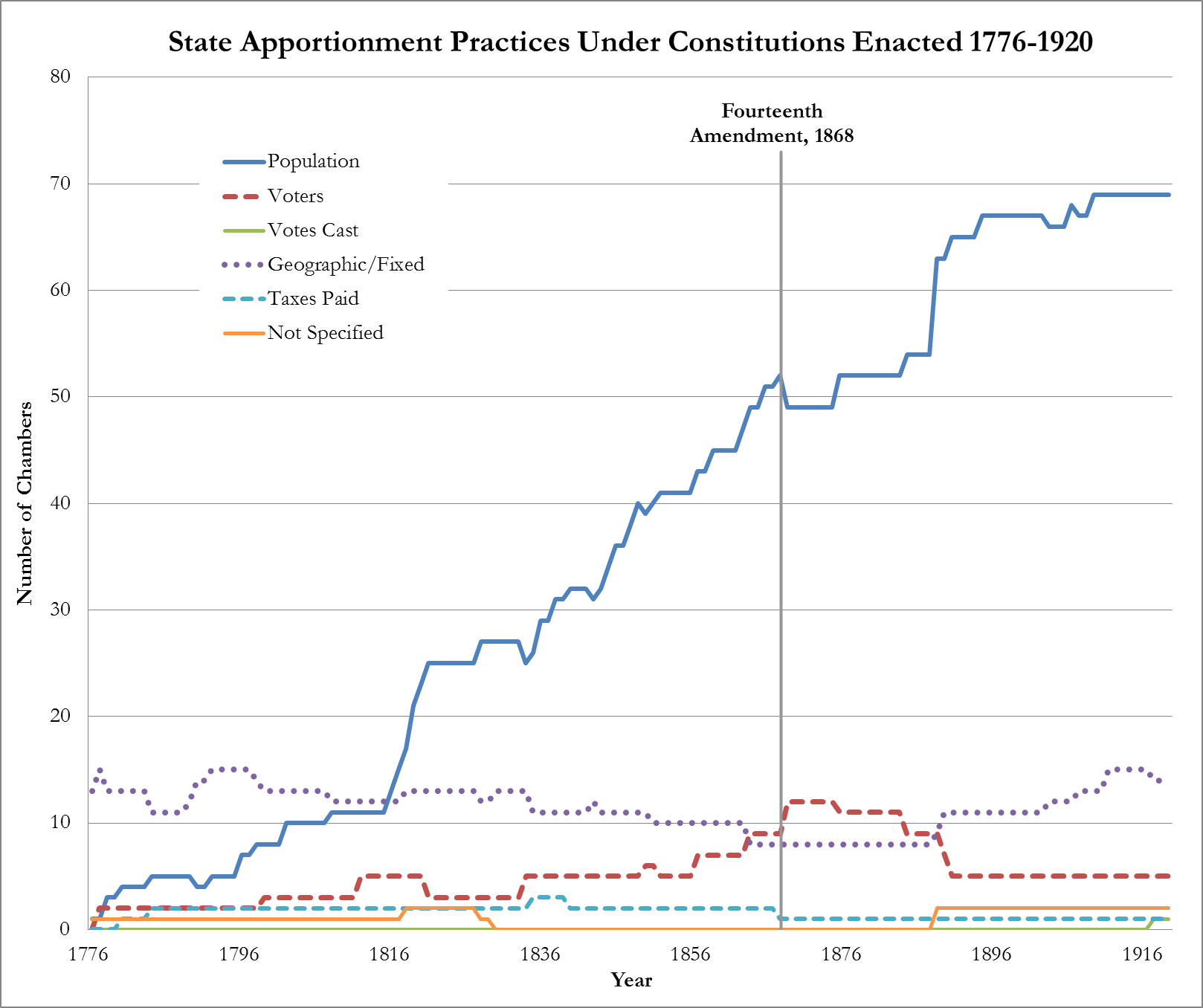A review of apportionment provisions in American state constitutions between 1776 and 1920 shows that population was heavily favored as the basis for apportionment and that voter-based apportionment bases were heavily disfavored during this period.
Between independence and 1920, thirty-five states joined the original thirteen and became part of the United States. In total, during this period, states adopted 123 state constitutions, not counting the constitutions of the eleven Confederate states, and made more than 30 relevant amendments.
All relevant state constitutional provisions and amendments can be found in the appendix to this memo. The appendix also includes a reference table listing each constitution/amendment and the corresponding apportionment base.
In summary, our research and analysis show:
- After an early period of adjustment, states increasingly used population as the basis for apportionment. The trend toward population-based apportionment was especially pronounced in the period after 1816 up until the Civil War and the percentage apportioned this way continued to climb for the remainder of the century.
- Initially, many population-based apportionment systems did not count everyone (excluding, for example, women or non-whites) though they counted more people than just voters (for example, male children as well as male non-citizens). These exclusions declined steadily over time and had largely ended by the 1870s.
- By 1920, 75% of state legislative chambers were apportioned on the basis of population – albeit often with minimum representation provisions for counties, with the majority of the rest (usually upper houses) apportioned on the basis of fixed districts.
- Voter-based apportionment was never heavily used by American states. It saw its peak following the Civil War when six states (in 12 legislative chambers) used it, but even this represented only 17% of all legislative chambers – and a number soon abandoned the practice. By 1920, only 5% of legislative chambers (five chambers in three states) were apportioned based on the number of qualified voters.
- Today, every state apportions representation on the basis of population, with only a handful of states making adjustments to exclude temporary residents, as discussed below.

